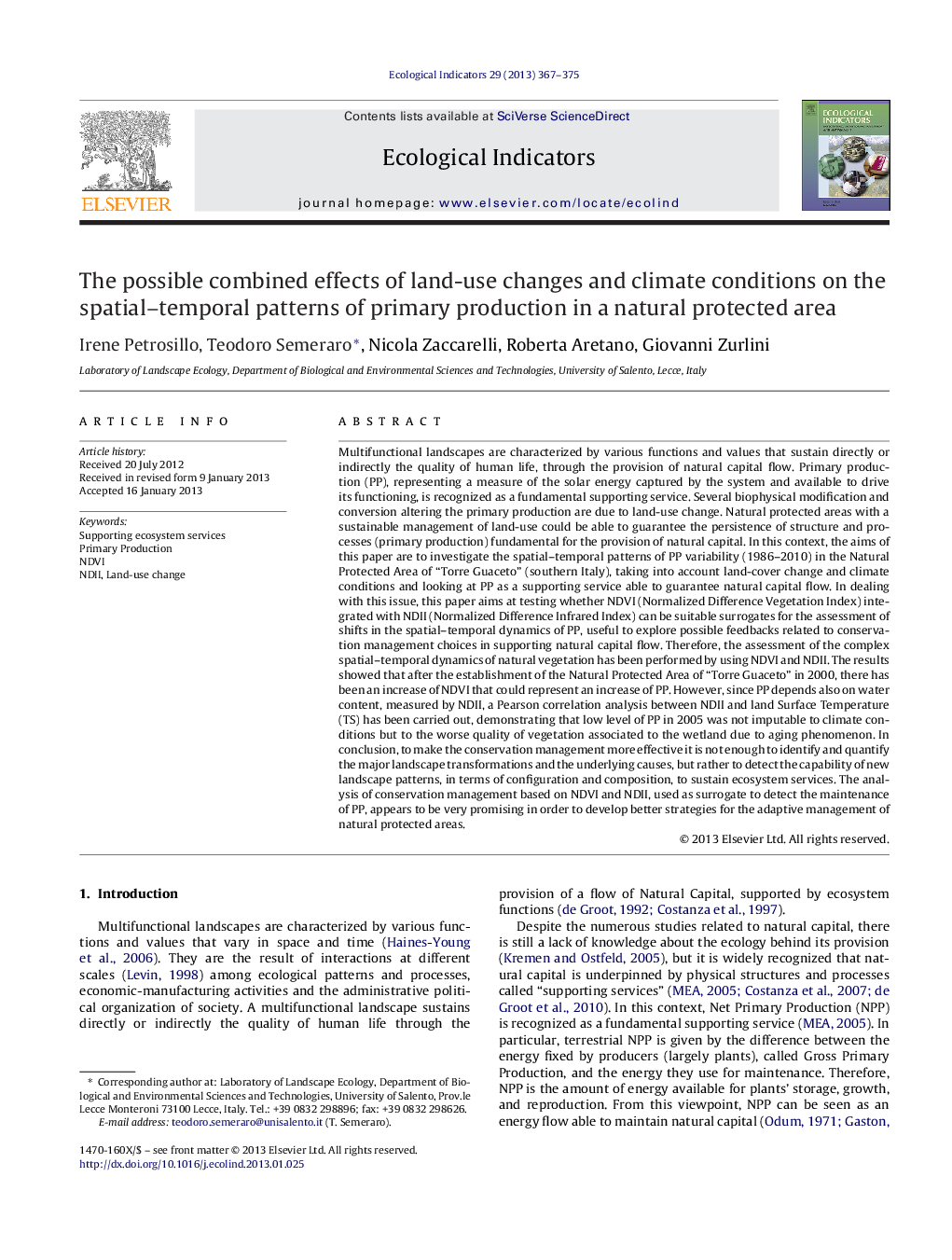| Article ID | Journal | Published Year | Pages | File Type |
|---|---|---|---|---|
| 4373493 | Ecological Indicators | 2013 | 9 Pages |
Multifunctional landscapes are characterized by various functions and values that sustain directly or indirectly the quality of human life, through the provision of natural capital flow. Primary production (PP), representing a measure of the solar energy captured by the system and available to drive its functioning, is recognized as a fundamental supporting service. Several biophysical modification and conversion altering the primary production are due to land-use change. Natural protected areas with a sustainable management of land-use could be able to guarantee the persistence of structure and processes (primary production) fundamental for the provision of natural capital. In this context, the aims of this paper are to investigate the spatial–temporal patterns of PP variability (1986–2010) in the Natural Protected Area of “Torre Guaceto” (southern Italy), taking into account land-cover change and climate conditions and looking at PP as a supporting service able to guarantee natural capital flow. In dealing with this issue, this paper aims at testing whether NDVI (Normalized Difference Vegetation Index) integrated with NDII (Normalized Difference Infrared Index) can be suitable surrogates for the assessment of shifts in the spatial–temporal dynamics of PP, useful to explore possible feedbacks related to conservation management choices in supporting natural capital flow. Therefore, the assessment of the complex spatial–temporal dynamics of natural vegetation has been performed by using NDVI and NDII. The results showed that after the establishment of the Natural Protected Area of “Torre Guaceto” in 2000, there has been an increase of NDVI that could represent an increase of PP. However, since PP depends also on water content, measured by NDII, a Pearson correlation analysis between NDII and land Surface Temperature (TS) has been carried out, demonstrating that low level of PP in 2005 was not imputable to climate conditions but to the worse quality of vegetation associated to the wetland due to aging phenomenon. In conclusion, to make the conservation management more effective it is not enough to identify and quantify the major landscape transformations and the underlying causes, but rather to detect the capability of new landscape patterns, in terms of configuration and composition, to sustain ecosystem services. The analysis of conservation management based on NDVI and NDII, used as surrogate to detect the maintenance of PP, appears to be very promising in order to develop better strategies for the adaptive management of natural protected areas.
Graphical abstractFigure optionsDownload full-size imageDownload as PowerPoint slideHighlights► Primary production (PP) can be seen as a supporting ecosystem service able to maintain related ecosystem services. ► Two vegetation indices (NDVI and NDII) are tested in the investigation of spatial–temporal patterns of PP. ► Pearson correlation coefficient is used to investigate the spatial correlation between climate conditions (ST) and NDII. ► In 2005 low negative correlation between ST and NDII, and high level of NDVI mean that low plant water content is due to specific conditions of wetlands. ► The assessment of primary production can give only some indication to better focus field measures useful for effective environmental management strategies.
